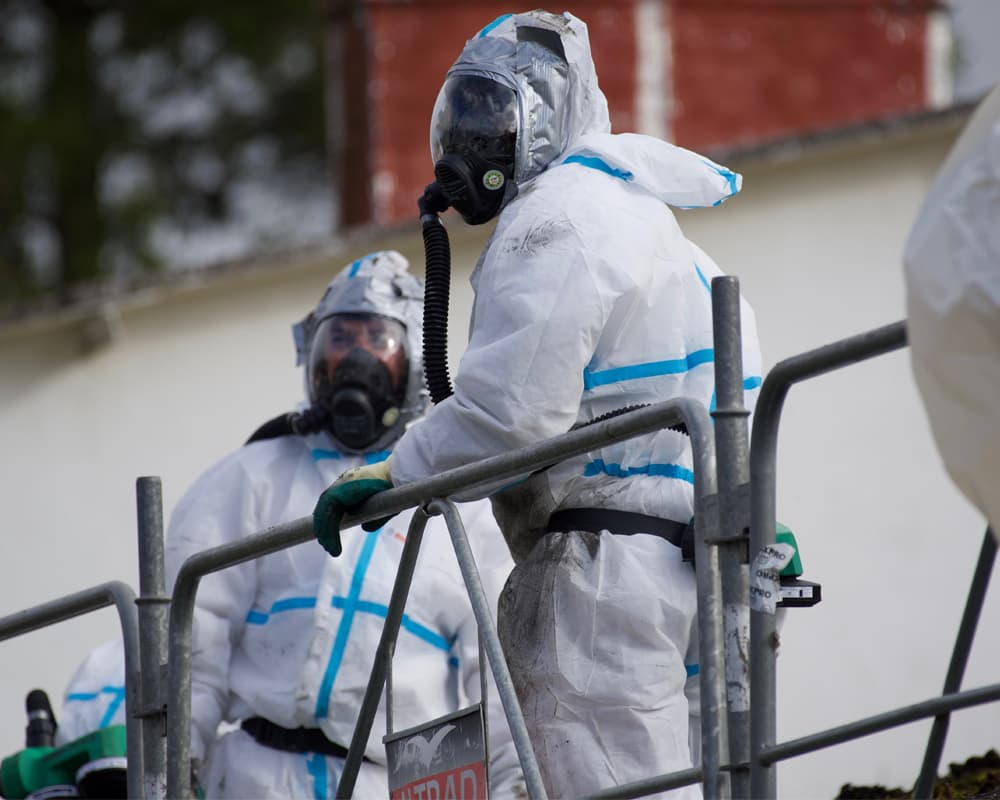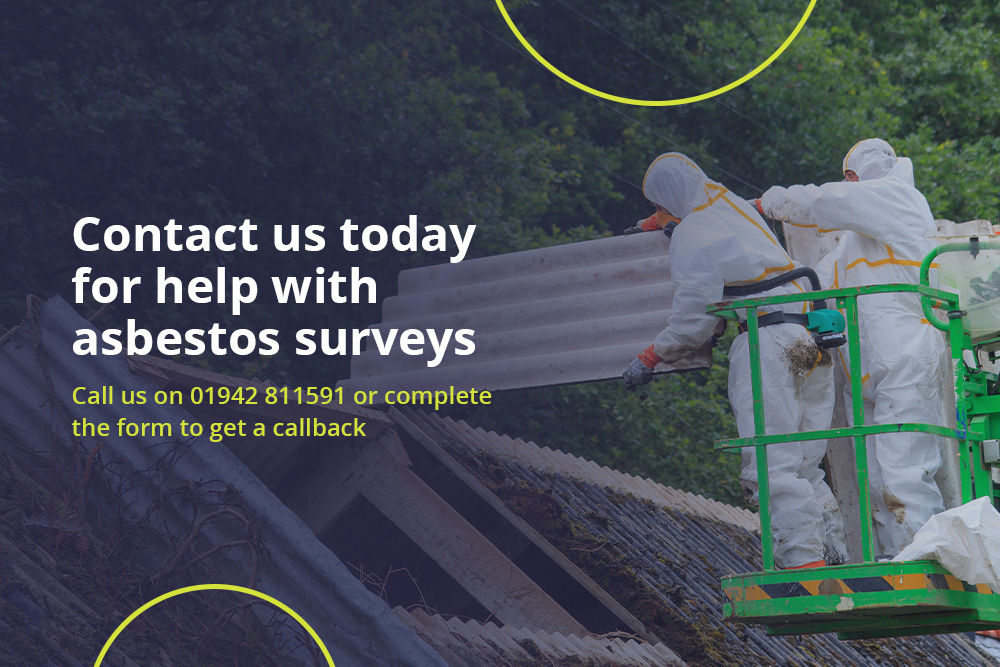
Asbestos Insulating Board (AIB) is a type of building material that was widely used in the 20th century (1950-1980 in the UK) as a fireproof and insulation material.
What is AIB?
AIB consists of compressed asbestos fibers, cement, and other binding materials. AIB was commonly used in the construction of walls, ceilings, and flooring in homes, offices, and other buildings.
Where do you find Asbestos Insulating Board?
AIB was used in a variety of construction applications, so it can be found in many different types of buildings. Some common places to find AIB include:
- Walls
- Ceilings
- Flooring in homes, schools, offices, and other buildings constructed prior to the ban on asbestos.
What does Asbestos Insulating Board look like?

A closer look at asbestos insulated boards
AIB is typically a gray or off-white color and has a smooth surface. It often has a rough, sandpaper-like texture and is typically dense and rigid. Some types of AIB also have a pattern or design on the surface, which can make it easier to identify.
How dangerous is Asbestos Insulating Board?
AIB is considered to be a serious health hazard, as the asbestos fibers in the material can become airborne when the material is disturbed or damaged. When inhaled, these fibers can cause lung cancer, mesothelioma, and other serious health problems.
This has led to AIB being banned in many countries, including the United States, the United Kingdom, and Australia.
What are asbestos insulating boards used for?
AIB was used in the construction of walls, ceilings, and flooring in homes, offices, and other buildings as a fireproof and insulation material. Its popularity was due to its low cost, fire-resistant properties, and ease of installation.
What countries banned the use of AIB?
The list of countries which ban the use of asbestos insulated boards grows every year
| Country | Region |
|---|---|
| Algeria | Africa |
| Argentina | South America |
| Austrlia | Oceania |
| Austria | Europe |
| Bahrain | Middle East |
| Belgium | Europe |
| Brunei | Asia |
| Bulgaria | Europe |
| Chile | South America |
| Croatia | Europe |
| Cryprus | Europe |
| Czech Republic | Europe |
| Denmark | Europe |
| Egypt | Africa |
| Estonia | Europe |
| Finland | Europe |
| France | Europe |
| Gabon | Africa |
| Germany | Europe |
| Greece | Europe |
| Honduras | Central America |
| Hungary | Europe |
| Iceland | Europe |
| Ireland | Europe |
| Israel | Middle East |
| Italy | Europe |
| Japan | Asia |
| Jordan | Middle East |
| Korea (South) | Asia |
| Kuwait | Middle East |
| Latvia | Europe |
| Lithuania | Europe |
| Luxenbourg | Europe |
| Malta | Europe |
| Mozambique | Africa |
| Netherlands | Europe |
| New Caledonia | Oceania |
| Norway | Europe |
| Oman | Middle East |
| Poland | Europe |
| Portugal | Europe |
| Qatar | Middle East |
| Romania | Europe |
| Saudi Arabia | Middle East |
| Serbia | Europe |
| Seychelles | Africa |
| Slovakia | Europe |
| Slovenia | Europe |
| South Africa | Africa |
| Spain | Europe |
| Sweden | Europe |
| Switzerland | Europe |
| Turkey | Europe |
| United Kingdom | Europe |
| Uruguay | South America |
What should I do if my property contains AIB?
If you suspect that your home or workplace may contain AIB, it is important to have it tested by a professional. If it is confirmed to contain asbestos, it is recommended that you avoid disturbing the material, as this can release dangerous asbestos fibers into the air. In some cases, the removal and disposal of AIB can only be done by a licensed professional with specialized training and equipment, such as the expert asbestos removal team at Malrod.
Choose Malrod to remove asbestos insultated boards from your property
In conclusion, while AIB was once considered a useful and effective building material, its harmful health effects have led to its ban in many countries. If you believe that you may have AIB in your home or workplace, it is important to take the necessary steps to protect yourself and others from its dangerous asbestos fibers. Choose Malrod as your trusted asbestos consultants.

